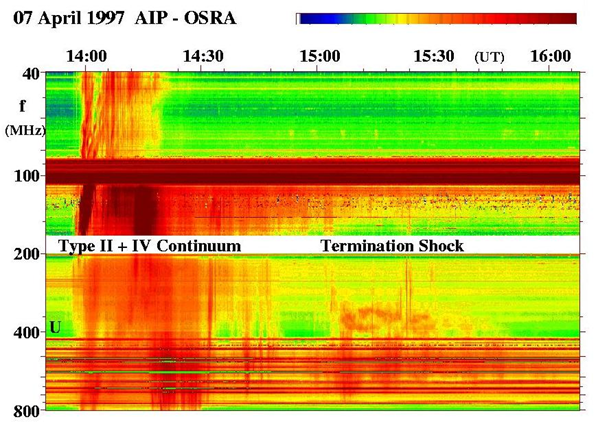Coronal shock waves

Propagation of a coronal wave across the whole sun as seen in the extreme ultraviolet (SOHO/EIT). Shown are difference images.
Credit: ESA/AIPIn solar flares, a large amount of energy is released within a short time, and plasma is accelerated to high velocities. If the characteristic speeds of the surrounding medium (e.g. sound and Alfven speed) are exceeded, shock waves are formed. Shock waves are particularly interesting for solar physics because they can accelerate charged particles to high energies. Shock waves can be observed directly in the X-ray, extreme ultraviolet, and visual regions. In addition, they also produce radio emission in the form of the characteristic type II bursts.
Coronal mass ejections can trigger large-scale shock waves that propagate at high speeds through the corona and interplanetary space. These shock waves are the main source of solar energetic particles (SEPs) emitted into the heliosphere and play a major role in space weather.

Dynamic radiospectrum (OSRA) showing the first observational evidence for the existence of a termination shock in a solar flare.
Credit: AIPA second class of shock waves can form in solar flares where rapid plasma flows are generated by magnetic reconnection. These so-called termination shocks represent a potential explanatory mechanism for the acceleration of charged particles in flares. The existence of this phenomenon was first demonstrated observationally by the AIP.